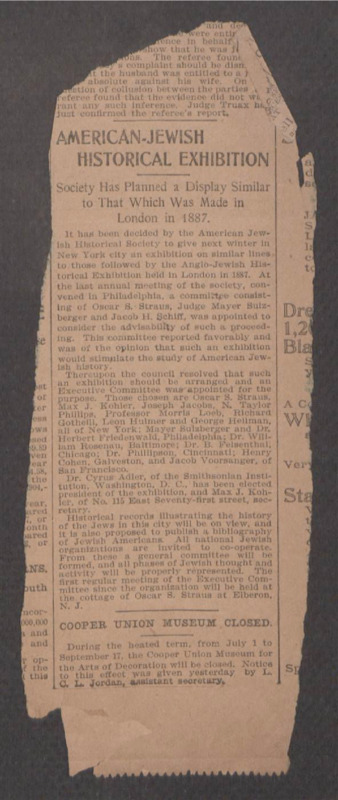The American Jewish Historical Exhibition: A Response to Immigration, Industrialization, and Populism During the Gilded Age
During the late 19th century, scientific racial theory permeated American intellectual thought at the same time that society was transformed by increased industrialization and large-scale immigration from Eastern and Southern Europe. This interest in race at home and abroad during imperial efforts is reflected in the exhibits of the Chicago Worlds Fair of 1893 commemorating Columbus’ voyage and the St. Louis Worlds Fair of 1904 celebrating the centennial of the Louisiana Purchase.
As Jews escaped persecution in Eastern Europe and immigrated to the United States, they joined a much smaller, but well-established, and fairly well assimilated Jewish community, from mostly German background. The newcomers, with their different customs, languages, and orthodox practices called into question the place of Jews in American society. Influenced by the Anglo-Jewish Exhibit in London in 1887, the American Jewish Historical Society called for the creation of an American Jewish Historical Exhibition in 1900 to define and situate Jews and Jewish history in American history.
This project seeks to answer the following:
- How did increased Jewish immigration, industrialization, and populism influence antisemitism during the late 19th century?
- How does the proposed American Jewish Historical Exhibition reflect how Jews viewed their place in American society and history during the Gilded Age?
